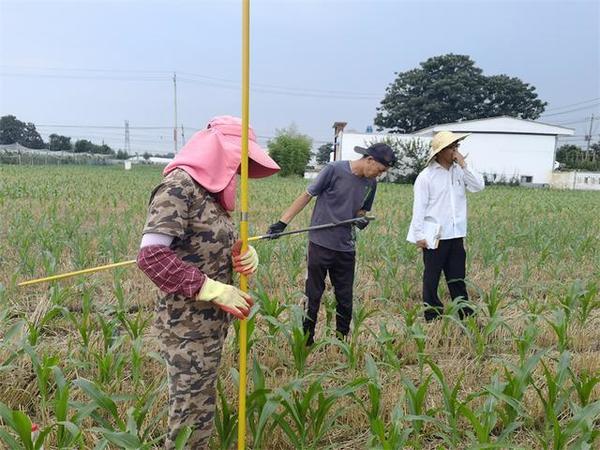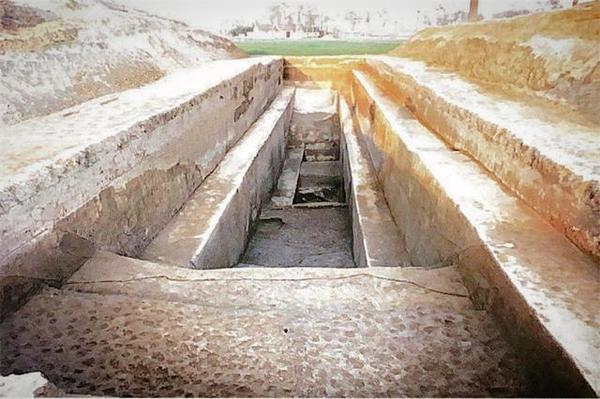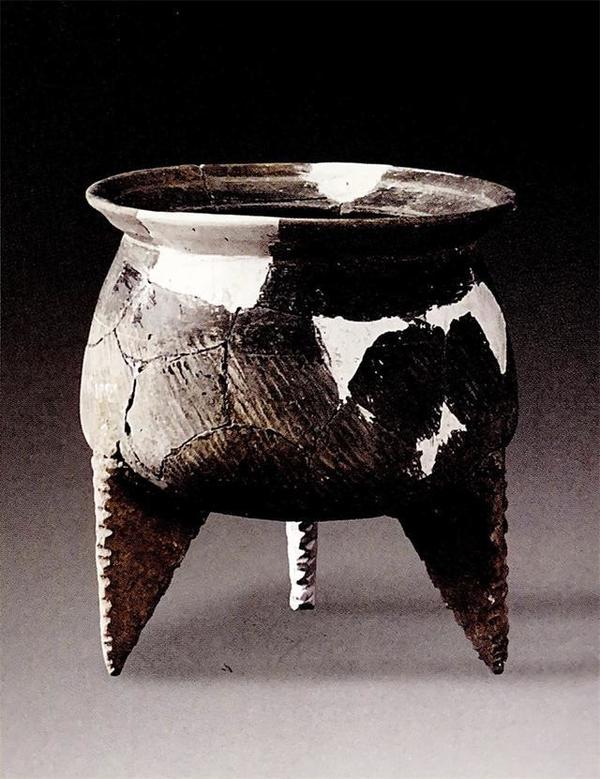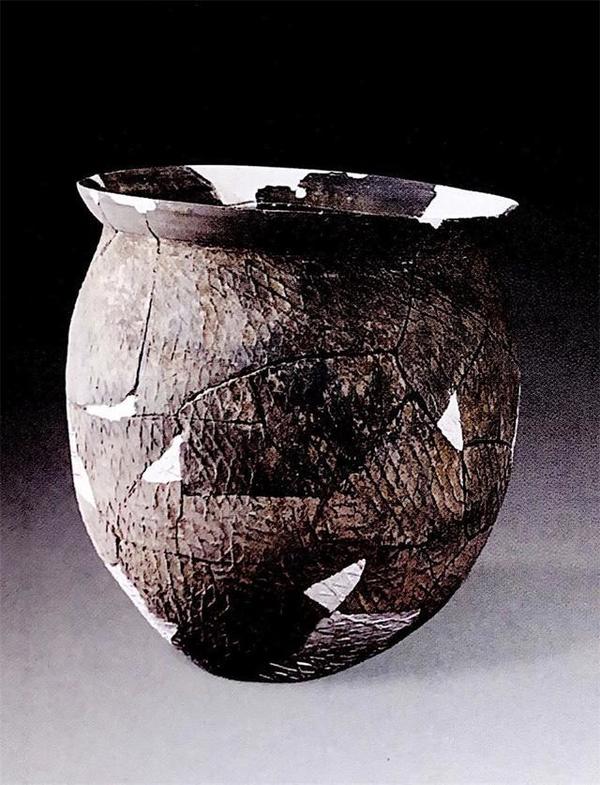When it comes to the culture of the Xia Dynasty (2070 BC-1600 BC), the Erlitou Culture (around 1735 BC-1530 BC) can not be neglected. Often referred to as "the earliest China", the Erlitou Site in Luoyang city of Henan province has become well known around the world.
Click on the video above
What is less known, however, is that the remains of the Xinzhai Phase (around 1870 BC-1720 BC) were also discovered in Henan. The Xinzhai Phase is generally believed to be earlier than the Erlitou Culture.
The real existence of the Xinzhai Phase
As for the origin and formation of ancient Chinese civilization, the mainstream has been formed that the Erlitou Culture is of the Xia Dynasty, but the questions have not been resolved such as "What is the culture of the early Xia Dynasty?" and "Are there any cultures earlier than the Erlitou Culture?"
Aerial photo shows the Xinzhai Site in 2016. [Photo provided to Henan Daily]
To solve these questions, we visited the Xinzhai Site in Xinmi of Zhengzhou city.
On a maize field, archaeologists were busy working. A new round of archaeological investigation has been carried out on a larger scale at the Xinzhai Site. Standing in a row, each of them held a Luoyang spade - a traditional tube-shaped testing tool widely used by Chinese archaeologists, thrust the spades into the earth first and pulled them out to observe the soil carefully. It was so hot that they were sweating even before 8:00 am.
Archaeologists working on a maize field. [Photo/Henan Daily]
"It is so hot, so we started working at 5 am." Geng Guangxiang, head of the archaeological team, showed us into the office.
Geng told us that the area covering Zhengzhou and Luoyang with Songshan Mountainas as the center is the main field to explore the early Xia Dynasty. In 1970s Zhao Zhiquan from the Institute of Archaeology of Chinese Academy of Social Sciences put forward the concept of the Xinzhai Phase, and pointed out that this culture was later than the Longshan Culture (around 2500 BC-2000 BC) but earlier than the Erlitou Culture. However, there are still some disagreements on this viewpoint.
The remains of the city wall. [Photo provided to Henan Daily]
From 1999 to 2000, the Center for Ancient Civilization Studies of Peking University and the Institute of Cultural Relics and Archaeology of Zhengzhou jointly lunched a new excavation at the Xinzhai Site. According to Zhao Chunqing, a researcher at the Institute of Archaeology, Chinese Academy of Social Sciences, also the head of the archaeological team, one of the most important findings is that they discovered the stacked remains of the third stage of the Wangwan Culture (after 2400 BC or so), the Xinzhai Phase and the early stage of the Erlitou Culture. Besides, thousands of cultural relics were unearthed, more than 300 of which have been restored. Finally, the sufficient evidence points to the existence of the Xinzhai Phase. Nowadays, basically the Xinzhai Phase has been confirmed to be of the Xia Dynasty, even earlier than the Erlitou Culture, which is of great significance to search for the capital ruins of the early Xia Dynasty, study its establishment and probe into the origin of ancient Chinese civilization.
A broken pottery ware. [Photo provided to Henan Daily]
Bumper harvests realized during the Xinzhai Phase
The emergence of ancient civilization is closely related to the development of grain production. Population would not increase without agricultural development. So how about the agricultural development during the Xinzhai Phase?
A pottery tripod. [Photo provided to Henan Daily]
"During the Xinzhai Phase, a multi-variety crop planting system had been developed with bumper harvests." According to Zhao, 84.87 percent of the carbonized seeds unearthed from the Xinzhai Site are of crops, including millet, glutinous millet, unhusked rice, soybeans and wheat, sorted from the most to the least. People relied on millet and other crops at that time, and began to grow rice. Originated in West Asia, wheat was introduced into China through Central Asia. The discovery of few wheat seeds at the Xinzhai Site indicates that wheat had already been introduced into China but not widely cultivated.
A special pottery bird statue painted red with cinnabar unearthed
According to Zhao, one of the prominent features of the Xinzhai Phase lies in its oriental culture. A 3,800-year-old red pottery bird statue discovered different from the bird models popular in the Central Plains and the Yellow River basin has the characteristics of such models seen in East China. Perhaps it was the embodiment of totem worship of the local people at that time or created during the period of Taikang (the third king of the Xia Dynasty).
The 3,800-year-old red pottery bird statue. [Photo provided to Henan Daily]
A capital city built by Qi
Some experts pointed out that the Xinzhai Site was the capital city of the king Qi. The findings suggest that the Xinzhai Site was a large ancient capital city with three moats of the early Xia Dynasty. At the site, the remains of large buildings (used as ancestral temples) and handicraft workshops (for bone implements) were discovered with numerous cultural relics that are exquisite and of high quality, reflecting the importance of the Xinzhai Site. Analysis from the perspective of chronology with the employment of carbon-14 dating technologies shows that the Xinzhai Site was probably built by Qi.
A pottery pot. [Photo provided to Henan Daily]
Chinese civilization has a 5000-year history. A new round of archaeological investigation is currently underway at the Xinzhai Site. The secrets under the seemingly ordinary field will help us to know more about ancient China. (Chinese source: Henan Daily App Reporter: Liu Chunxiang Translator: Zhao Hanqing Video: Wang Junyi Proofreader: Li Wenjing)
Related reports
The Xia Dynasty Travel Episode II The Dongzhao Site in Zhengzhou: 'Bridgehead' of the Xia Dynasty
The Xia Dynasty Travel Episode V The Puchengdian Site: Two Ancient City Ruins Discovered
The Xia Dynasty Travel Episode VII The Yuzhuang Site: Unveiling the Noble Life 4,000 Years Ago
The Xia Dynasty Travel Episode IX The Erlitou Site in Yanshi: A 'Dynasty' in a Small Village









